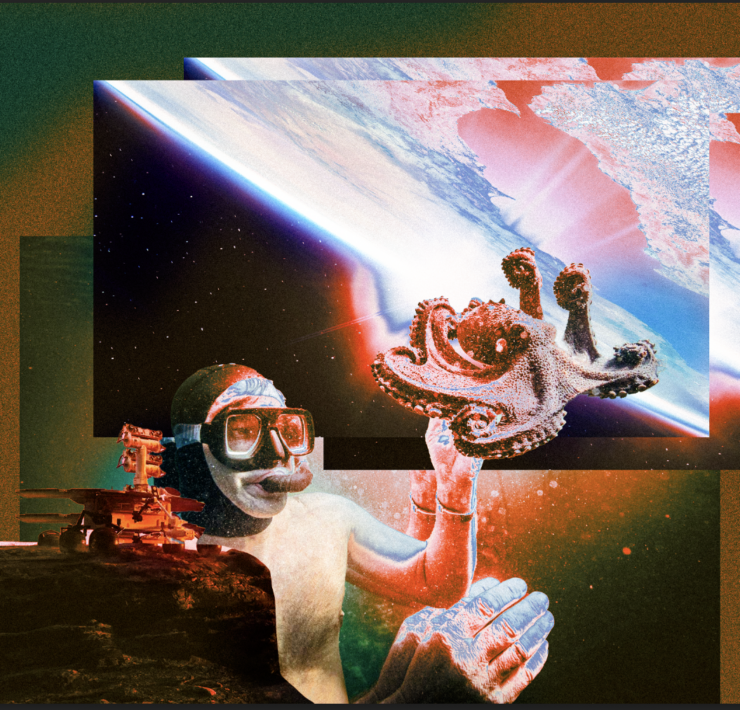While mainstream America is in love with the ’80s once again (see: every brightly colored t-shirt at the mall, the snyth-rock everywhere, and possible remakes of both The Karate Kid and The Neverending Story are rumored to be in the works), I’ve noticed that a number of teens and college students are drifting back towards grunge, particularly Nirvana.
After seeing enough tees with Cobain, Novoselic, and Grohl got me thinking about Nirvana, and how we remember musical icons. The truth is that we often remember the pop culture of the past in a much more idealistic light than what actually occurred. The following is just one perspective (backed with some evidence) on re-thinking two musical icons, who have recently been celebrated in films (Cobain in About a Son and Christopher Wallace in Notorious).
Kurt Cobain
Let’s go with the indisputable facts first. Yes, the video for “Smells Like Teen Spirit” (which MTV would originally only air very late at night), essentially killed hair metal in a matter of months, and ushered in the grunge movement. All this is true. What’s rarely discussed/written is that Nirvana just happened to be the band that got lucky enough to introduce the Seattle’s signature grunge sound to the country. Soundgarden was churning out a similar sound three years before Cobain put Nirvana together, so that takes away the idea that Cobain “invented” the genre in his head. They sold 10 million records, but so did Pearl Jam and Bush, cutting the feet from the argument that they were the “biggest band of the time by far” (Note: Pearl Jam’s Ten, re-released this week, has sold at least two million more copies than Nevermind).
I recently bought both Nevermind and MTV Unplugged for a buck each online. Since I’d never owned either album as a jr. high student when they were released (strict, protestant parents and all), I wanted to see what the hype was about. Yes, there are some catchy songs on Nevermind. But it’s also an album that has very little to say. Cobain was famous for working very hard on melody & guitar parts, and neglecting the lyrics, leaving them half-finished until the song was actually being recorded, and then just singing whatever came to mind. It’s difficult to even tell if some of the lyrics he sings are words, or just angry groans connected with syllables.
When compared to his peers, Cobain just doesn’t hold up. When you throw out the band’s debut, which no one ever heard, Cobain essentially gave the world 24 songs. Out of that pool, one of those was a pop culture phenomenon, and three more are pretty fun on Rock Band. None of them seem to be about anything in particular.
Comparatively, Pearl Jam’s Eddie Vedder who’s voice is far more dynamic, and whose lyrics are clearly more thought out (“Jeremy” is a reflection on the public suicide of a high school student in 1975) has stayed more or less relevant over the last 18 years, consistently puts out albums without falling into the “touring greatest hits package” category. He scored a film (Into the Wild), has been on the forefront of giving fans what they want (you can often buy a live recording of the show you were at), and has fought to keep ticket prices fair (translation: he sued Ticketmaster for charging a “service fee”).
Cobain’s bandmate, Dave Grohl, gave Cobain a tape full of demos, which Cobain berated and refused to release as Nirvana material. After his suicide, Grohl recorded the demos, playing every instrument himself, and signed a record deal under the moniker Foo Fighters, going on to become one of the biggest commercial rock bands of the last two decades.
In 1994, Green Day released Dookie, and the world moved on to punk rock, which has proven to be a much more lasting influence than our collective love affair with the flannel music of the northwest, which was essentially around for two years.
Notorious B.I.G.
Like Cobain, The Notorious B.I.G. was very fortunate enough to have a huge song at exactly the right time (“Juicy”), passed away before his had time to tarnish or fade, and is back in vogue due to a movie. On the plus side, B.I.G. has a loose, party flow, and thanks to Sean “Puffy” Combs (we’ll just go with his name from the ‘90’s), top-shelf beats. But deeper listens reveal several weaknesses in Biggie’s music. For one, he was completely self-centered. Whereas Tupac revealed the pain of urban poverty to the world, and Nas focused his debut on racial issues of the within the justice system, Biggie told us he bought a Lexus, a Sega Genesis, told us he liked hot tubs, told us he got laid… Not that some hip-hop shouldn’t have a fun, party vibe, that’s part of the genre, to be sure. But when was the last time you enjoyed yourself at a party because some loudmouth was telling out about his car, his video games, and the “hotness” of his girlfriend?
Also like Cobain, B.I.G.’s lasting contribution to music is centered around a few songs (“Juicy,” “Mo Money Mo Problems” and “Hypnotized”). And one of those (“Mo Money Mo Problems”) leans on guest spots and looped vocals for half three minutes in a four and a half minute song.
I’ve loved hip-hop since jr. high (I grew up on a farm, but listened to St. Louis radio through the static). In all my years as a fan, and my seven years working in the music industry, I have yet to come across any compelling argument as to why Biggie was such a “prolific rapper” of the time. His wasn’t a gifted lyricist, crafting rhymes layers upon layers of meaning, like Jay-Z. He didn’t fuse styles, like Q-Tip’s A Tribe Called Quest by bringing jazz into hip hop. He wasn’t the storyteller that Nas, who stepped into the limelight at the same time as B.I.G., showed himself to be. Leaving behind only a few freestyles and loose ends, Biggie certainly didn’t share Tupac’s passion for recording, had literally hundreds of songs banked up at the time of his death.
Where We Go Wrong
In conclusion, I believe music should be judged on just a few things: artistic vision, strength of songwriting, and the ability to either capture a moment in time, or communicate an emotion, an experience, or a truth about life.
Kurt Cobain and the Notorious B.I.G. were famous artists. They were rich artists. They are again becoming cool artists in pop culture. But I contend that neither produced particularly good or enjoyable music, nor bothered to communicate anything worth saying or hearing.
Kurt and Biggie. Rock stars. Musical icons. The subjects of films and documentaries.
They just weren’t good musicians.
More than two overhyped individuals, they’re examples of what the mass media tends to value, and overlook in modern music. They’re both great examples of how great albums get pushed to the background in favor of the “cool” artists at the time, which years later, we see as the ones who were the most irrelevant. As much as I’d love to say that this doesn’t happen in the new DIY indie world we now live in, I believe it is still going on. The only difference is that we have invented new rules for what’s “cool” (this year it seems to be putting odd, “progressive” sounds in your songs and ignoring traditional songwriting structure). I wonder what albums that we’ll listen to in 15 years and realize that they weren’t everything we built them up to be. Or that they weren’t even enjoyable.
As always, your thoughts are both necessary and welcome.




















